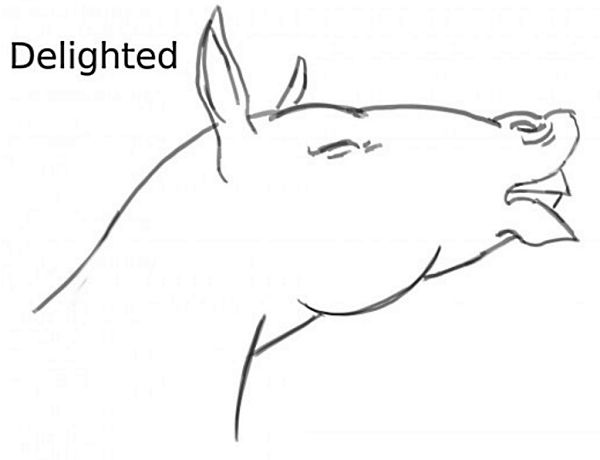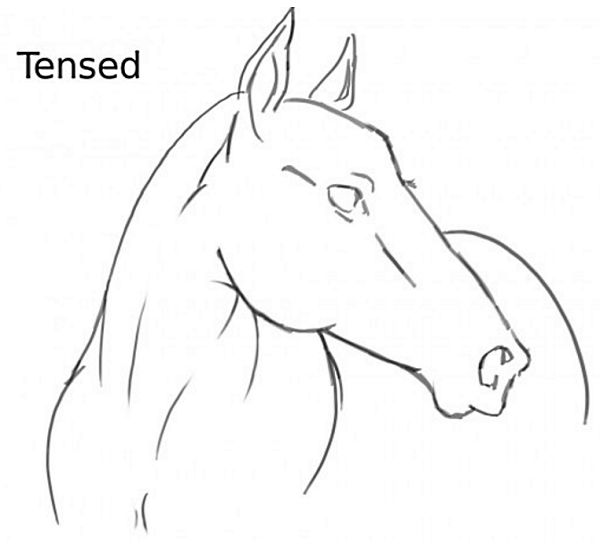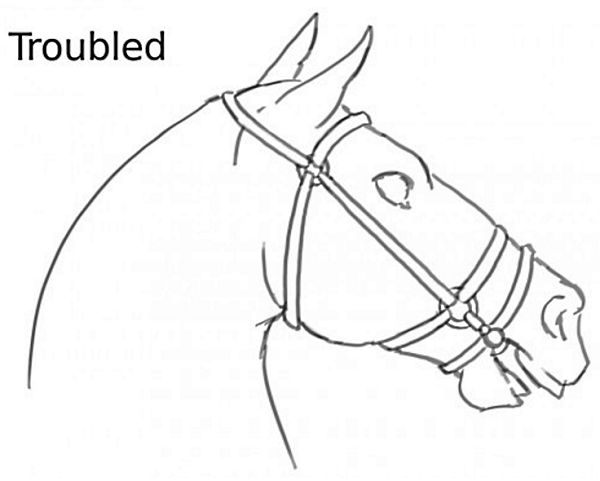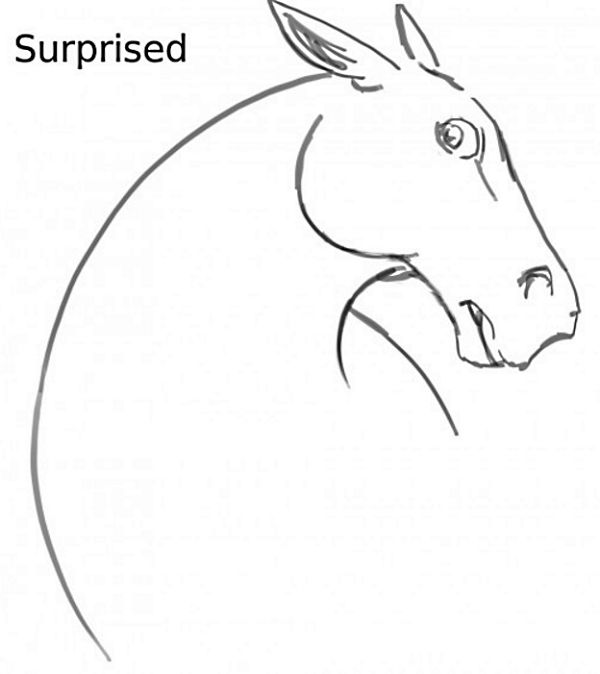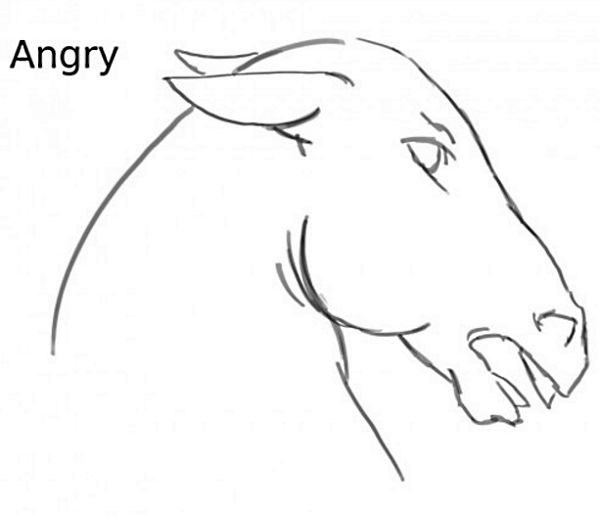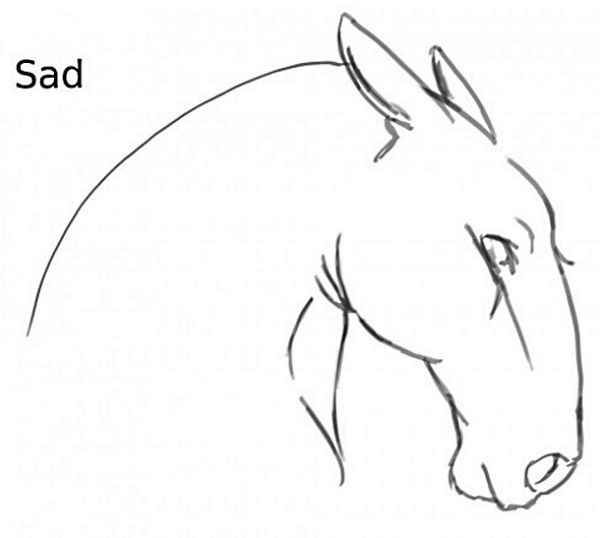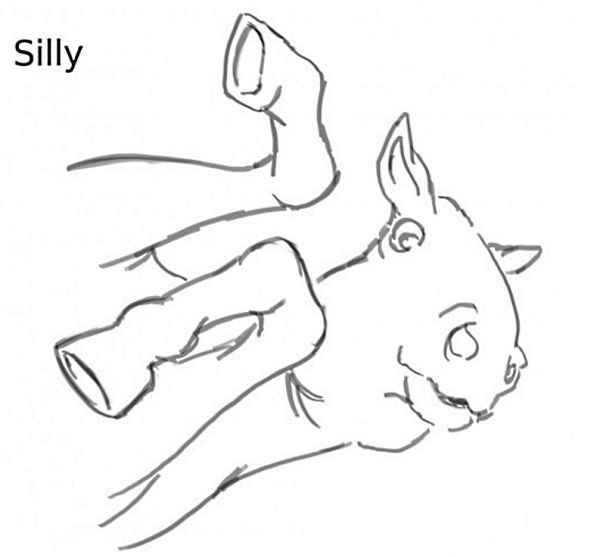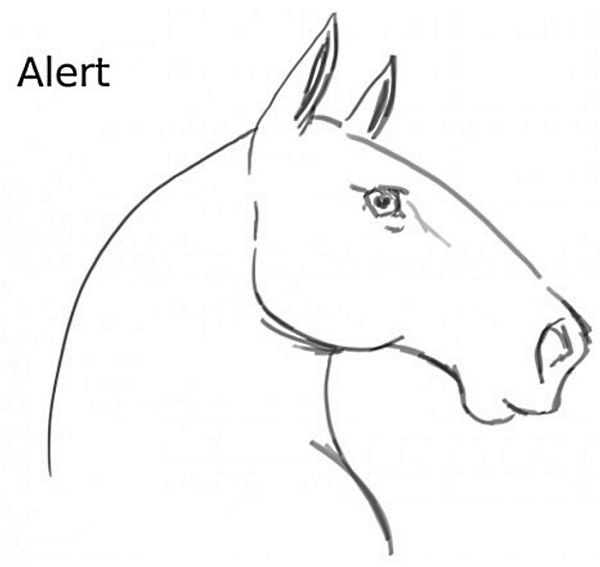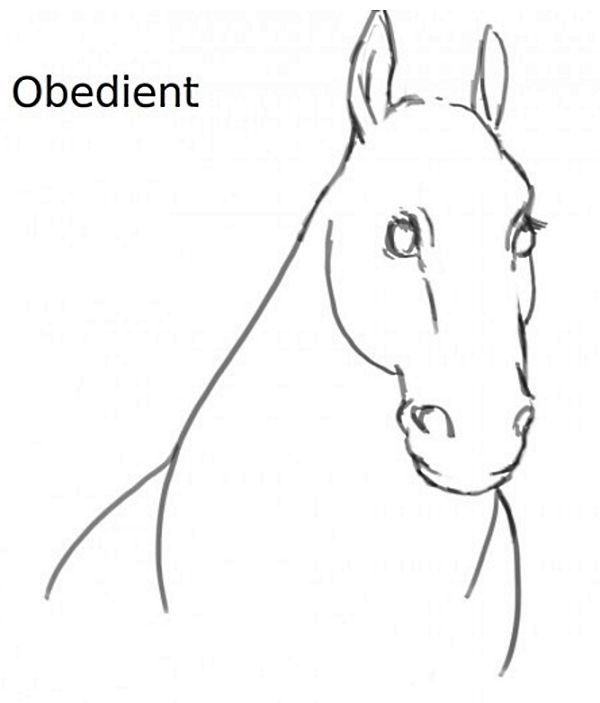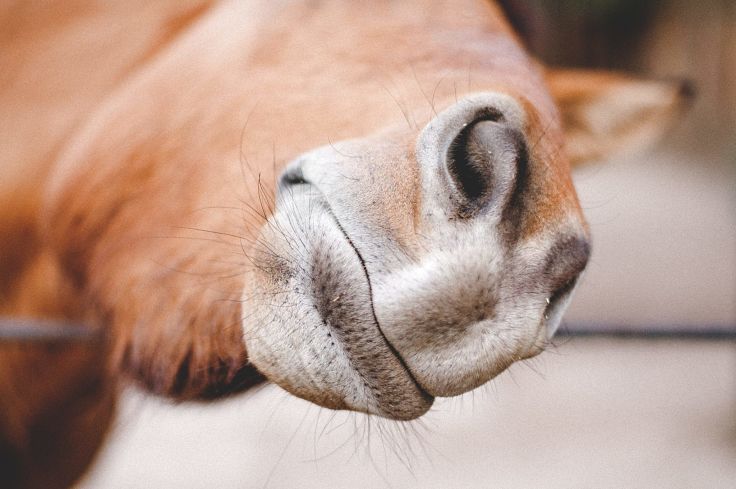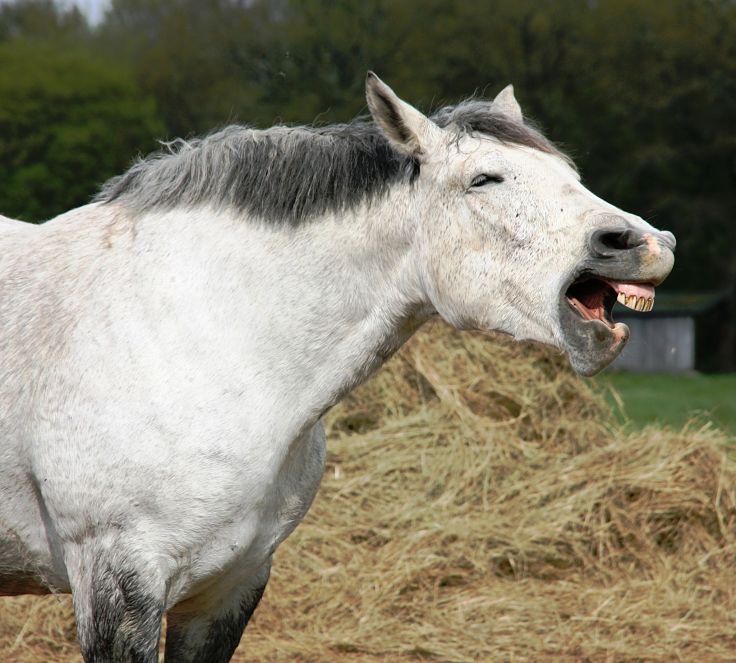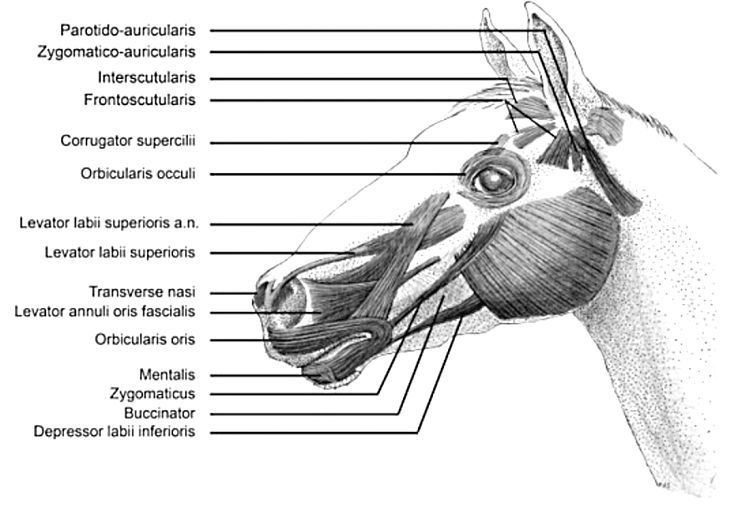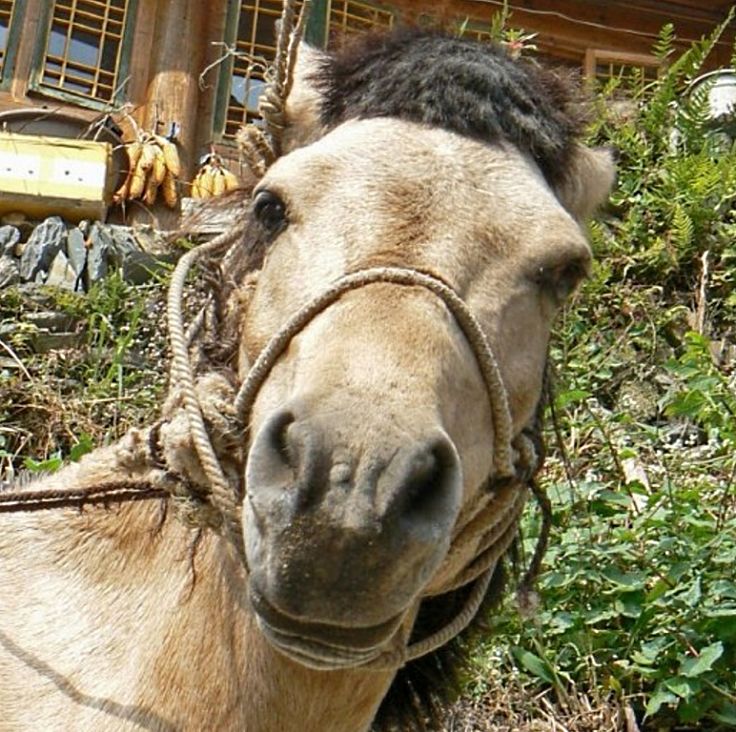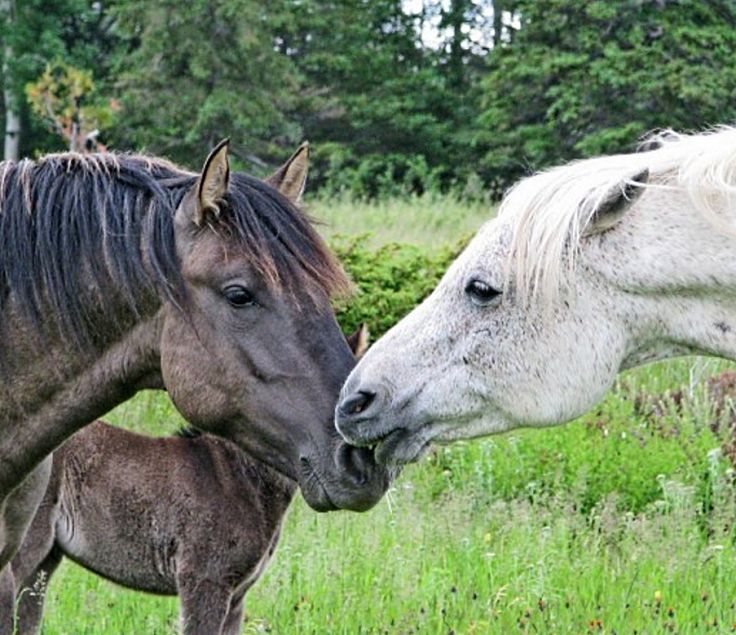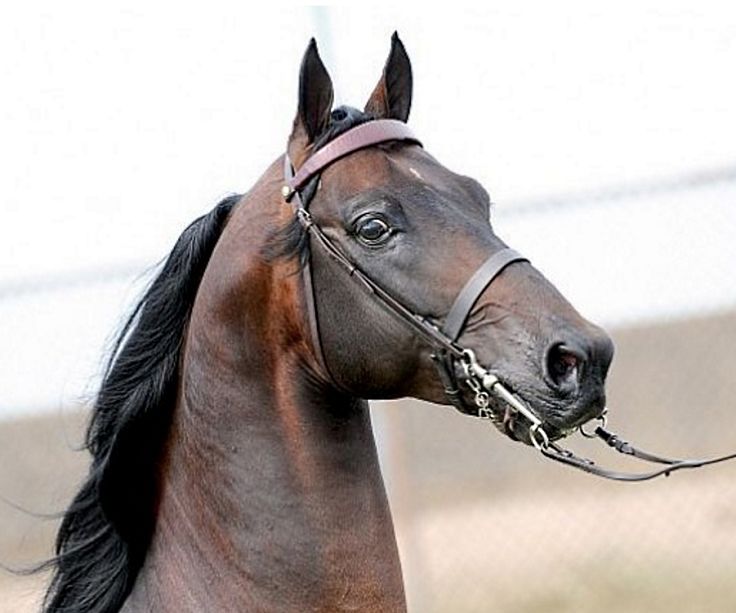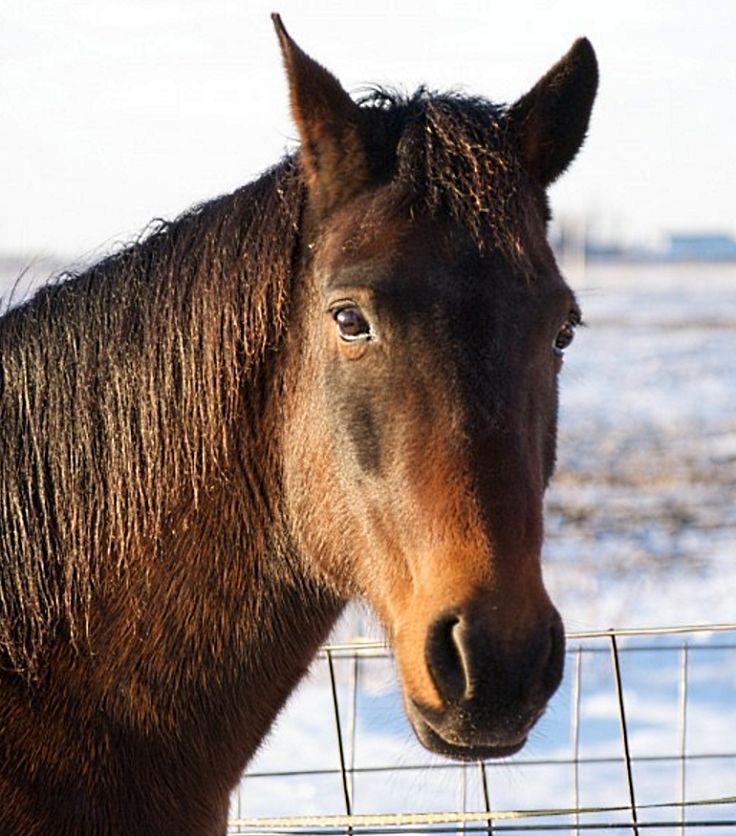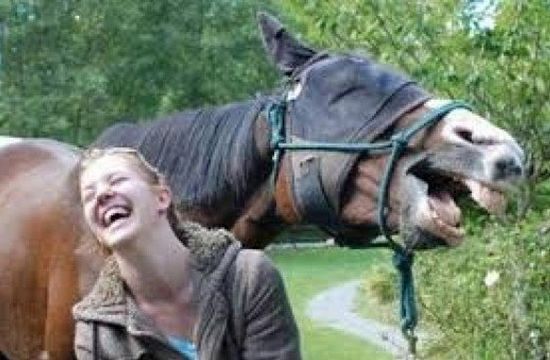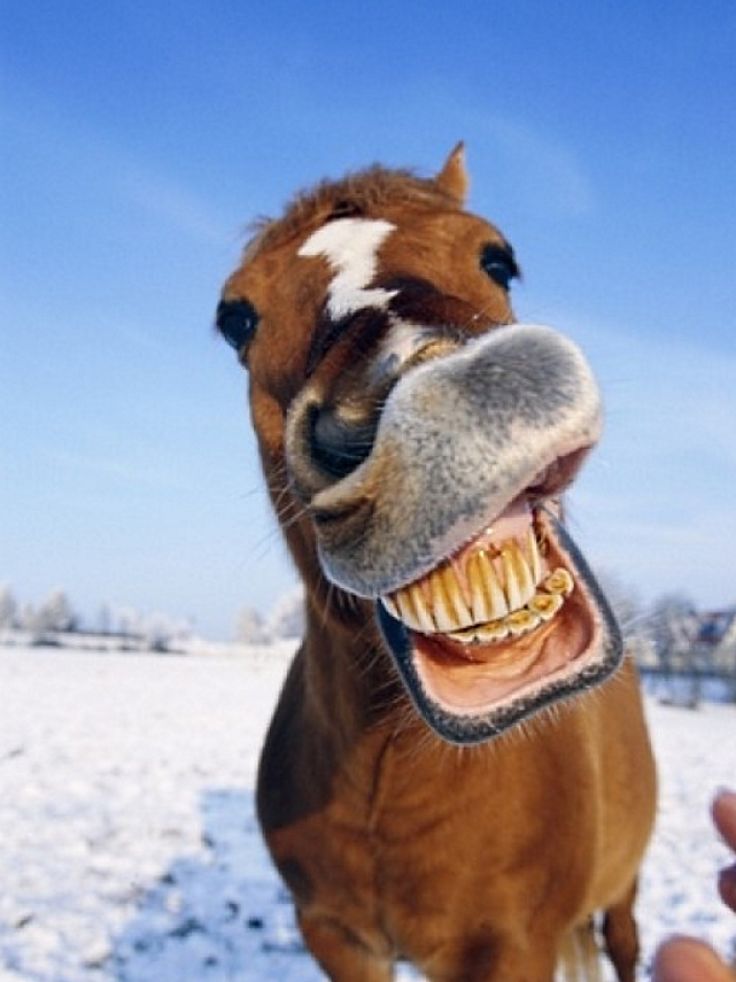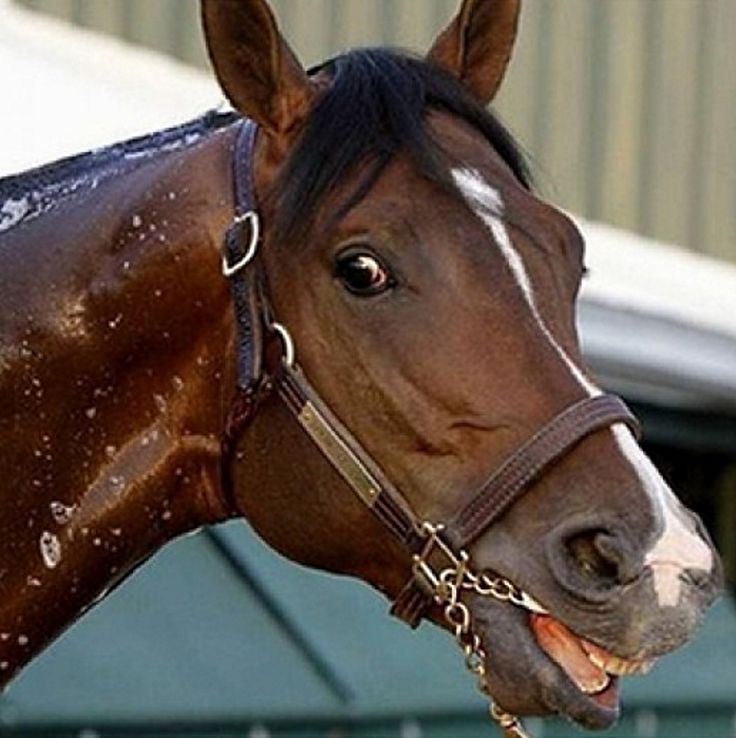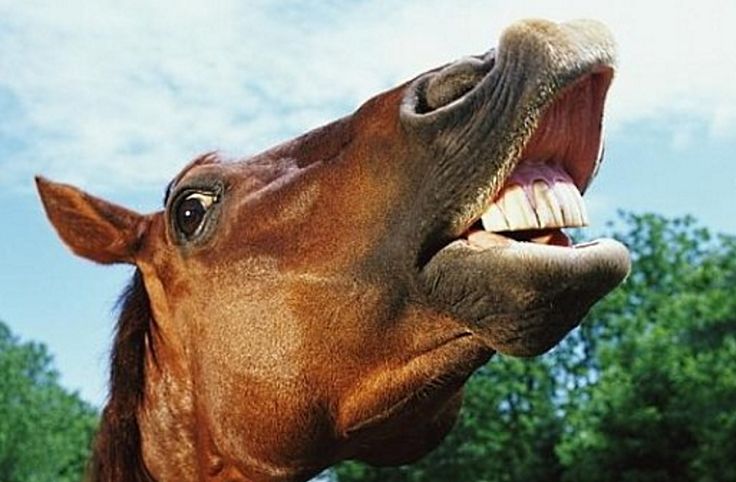Facial Expressions of Horses Revealed as Facial Action Code System
The ability of animals to use complex facial expressions to express emotions and convey message isn't unique to humans. Chimpanzees, cats and dogs also use facial expressions and 'body language' in similar ways. One basic restriction is the number of facial muscles that can be used in various ways to develop codes and signals. Fish which have frozen faces and eyes, will obviously struggle to express their emotions. Perhaps that is why many people say that fish cannot feel pain. Without facial expressions or sound fish will struggle to express emotions in the way that we do. However, fish have complex array of body language and gestures which we probably do not understand.
There is a large dash of anthropomorphism in all of this. Humans tend to 'read' the faces of animals in similar ways to which they 'read' human faces. This probably leads to many incorrect interpretations. Another aspect is that cats and dogs imitate human facial expressions. This applies to so called contagious yawning. You can easily make dogs yawn by simply yawning in front of them. It also raises the issue of which animals are 'conscious' and whether all animals have elements of the 'within of things'.
EquiFACS
Recent research has confirmed that horses show their feelings using facial expressions involving the head, eyes, ears, mouth, lips and tongue. Horses also have highly evolved body language that horse owners learn to read and interpret. Posture, head position, tail movements and tail movements are also important. Scientists at the University of Sussex found that horses use an array of muscular movements, singularly and together and to create a set of facial expressions that other horses can read and understand as a form of sign language for their feelings and moods and also top convey 'messages' and communicate. Sometimes the facial expressions and combinations are nearly identical to those of humans. Others involving the ears are not shared with humans, most of which cannot move their ears.
The researchers compiled a directory of horse facial movements and developed a comprehensive coding system for common horse facial expressions. The coding system was named EquiFACS (Equine Facial Action Coding System). They identified 17 different facial actions that were used to create the 'language':
- Inner Brow Raiser
- Eye Closure
- Eye Blink
- Half Eye Blink
- Upper Eyelid Raiser
- Upper lip Raiser
- Lip Corner Puller
- Sharp Lip Puller
- Nostril Lift
- Lower Lip Depresser
- Chin Raiser
- Lip Pucker
- Upper Lip Curl
- Lip Presser
- Lips Part
- Jaw Drop
- Mouth Stretch
- Eye White Increase
- Eyes Forward
- Ear Adductor
- Ear Flattened
- Ear Rotator
- Lower Lip Relax
- Tongue Show
- Jaw Thrust
- Jaw Sideways
- Nostril Blow
- Nostril Dilator
Basic Guide to Understanding Horse Expressions, Body Language, Feelings, Emotions
Read the Eyes
- Eyes are bright and wide open, means that your horse is alert, paying attention and aware of his surroundings.
- If only one eye is open, you need to check whether something is wrong with the other eye.
- If both eyes are shut, your horse is probably sleeping or dosing.
- If the eyes are half shut, this generally indicate the horse is sleepy or inattentive (bored?)
- If the whites of eyes are very prominent this shows the horse is fearful and likely to panic
Read the Ears
- When the ears are to the side, that generally signals that the horse is alert and concentrating, yet generally relaxed and not concerned.
- When one ear is back, the horse is probably listening to something occurring behind the horse.
- When ears that are flattened back this signals that your horse is upset.
- Ears are pricked forward may signify the horse is interested or curious about what is happening., However when the ears are pricked forward, with nostrils flared and eyes wide open, this is a sign that the horse feels threatened.
- Ears directed slightly forward generally is a sign that the horse is relaxed.
Read Facial Expressions
- A drooping chin and sometimes the mouth as well shows your horse is relaxed or sleepy.
- A curl of the upper lip signifies the so called 'flehmen response'. A horse will raise his head, extend his neck, inhale, and roll his upper lip back and under exposing the upper teeth and gums. This expression is common to many animals and if often misinterpreted by humans who mistake it for a laugh, grimace or smirking. In reality, it is associated with a response to smells or tastes as the horse tries to understand its environment using all of its senses.
- Tight hard mouth and lips signal that the horse is tense, fearful, anxious or mildly angry
- If the muzzle is wrinkled the horse may be worried or nervous
- When the teeth are exposed and nostrils elongated it show the horse is aggressive and may be ready to bite
- Drooping lips and mouth that sags generally shows the horse is bored, relaxed, exhausted and perhaps in pain
- Flapping of the lower lip is a sign the horse is sensitive or nervous
Read Head, Neck, and Tail Language Signals
- A horse that holds his head high shows alertness and curiosity.
- A horse that holds his head in a lowered position could show mean several things. It could show submission or acceptance. It could also mean that the horse is depressed, tired or ill in some way.
- A horse that snakes his head by lowering the head a little, and moving his neck from side to side is showing aggression and discontent.
- A horse that turn his head back to look back at its flank, may signal discomfort in the abdomen.
- Tail swishes can be used to deal with flies and other insects, but the stronger ones generally indicate agitation and is often a warning signal for people and other horses to keep away.
- Raise of the tail is generally a sign your horse is feeling alert. attentive and happy .
- When the tail is clamped down it is a sign your horse may be feeling some discomfort, or may be annoyed by insects.
- When a horse stretches its neck out, with loose muscles the neck, this is a sign that the horse is happy, contented and relaxed
- Tight and tense muscles under the neck are signs that the horse is feeling unhappy, concerned or stressed in some way.
Read Horse Legs, Posture and Body Position Language
- Swinging of the hindquarters may show that the horse is getting ready to kick.
- Trembling is generally a sign of fear and may indicate the horse wants to fight, bolt, escape or run.
- Any rigid or tight muscles and stiff movements can be a sign tyour horse is stressed, nervous or in pain.
- If your horse stands with its back raised, he could be sore from the saddle.
- A horse that lifts either one front leg, or one back leg is often a threat signal.
- A horse that splays or spreads out the front legs may be a sign that your horse is getting ready to run, rear up or bolt.
- A horse that paws the ground or stamps the forelegs is feeling frustrated, impatient or uncomfortable.
Body Language of Horses
